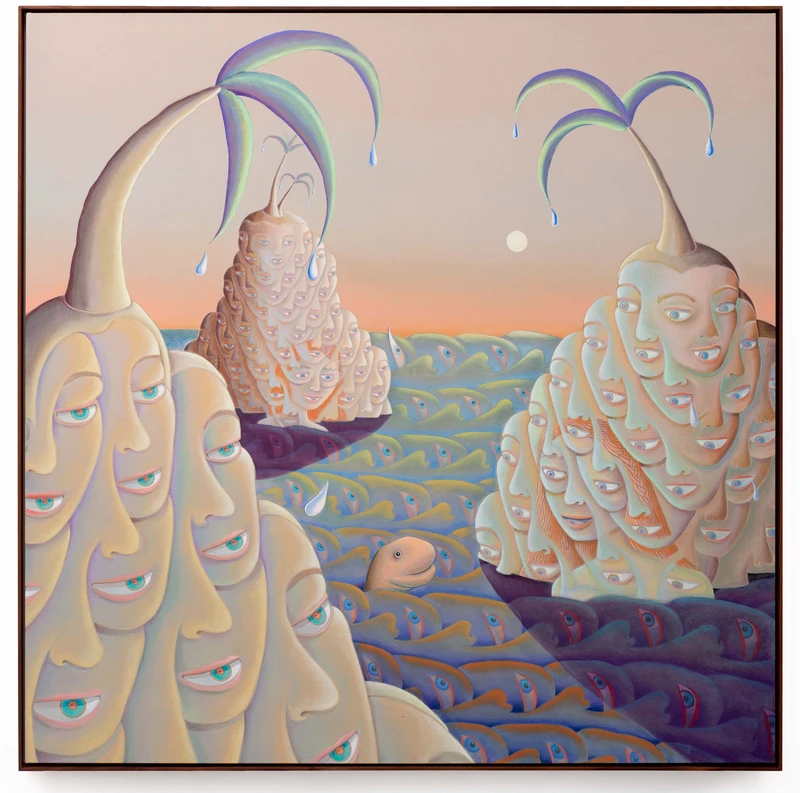Marlene Steyn: You-Me-Verse
16 Sep-16 Oct 2022
PV 16 Sep 2022, 5-8pm


Where do you end and I begin? We are constantly seeping into one another, eternally dissolving into the world. We are entangled with our surroundings. We are filled with infinite strangeness.
Marlene Steyn’s work is concerned with the relationship between painting and psychoanalysis, exploring the formation of reality and of the self. Each painting offers a deep dive into the psyche, bringing the viewer face to face with the other within. Steyn’s work encourages us to find the unfamiliar within ourselves and to challenge the boundaries of our bodies and identities.
Throughout You-Me-Verse, female figures are interwoven with their environments, becoming part of the landscapes. Faces appear and reappear as iteratively repeated motifs. The repetition is not mechanical or precise; features and expressions change slightly from face to face, suggesting the phases and multiplicities of identity that can be found even within a single individual.
A number of the works in the exhibition examine the blurred boundaries of the self experienced during pregnancy and motherhood. Steyn draws visual parallels between trees and the placenta, as well as using wordplay to suggest a mysteriously potent analogy between moon and womb. You-Me-Verse confuses the dimensions of time and space, mingling bodily scale with the level of the landscape or even the planetary or universal.
The notion of the oasis emerges throughout the show, suggesting an essential process of creating sanctuary and finding calm, in spite of the visual complexity of the images. Bodies of water further evoke the womb, while water is also figured as a space of the imagination and the unconscious. These dreamscapes, determined by emotions and hormones, are part of Steyn’s attempt to create inclusive, soft, feminine spaces, ruled by the poetical rather than the logical.
Many of the paintings are set around an ambiguous twilight hour, with the sun low on the horizon or the moon just rising. These are times of metamorphosis, when the light tricks the eye and objects and places seem to morph, taking on magical identities. This concern with change is rooted in Steyn’s interest in mythologies and the fluidity of interpretation surrounding folklore and legends. For example, within the many compelling narratives of people turning into plants, animals, and geographical features, does metamorphosis offer an active escape or a passive sense of release? Or is transformation sometimes a punishment, dooming a character to an eternity of remembered trauma or grief?
Steyn’s paintings are themselves transformational; never static, they induce a sense of restless vertigo through apparently infinitely repeating openings into the new. The complex layering of ideas and images offers various points of entry into each work, allowing openness to interpretation and pointing to a multifaceted subjectivity across shifting emotional registers.